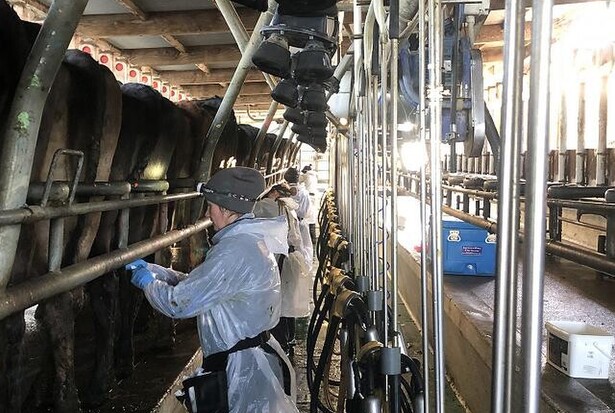Breaking down the jargon so we can easily reduce antibiotic usage on farm.
A short history of abbreviations
- AMU = antimicrobial use (‘antibiotics’)
- DCAT = dry cow antimicrobial therapy (‘dry cow’)
- ITS = internal teat sealants (‘teat seal’)
Vets love to abbreviate things. I think it makes us feel important — BVD, PD, KVC. But, to be fair, the dairy industry does exactly the same and probably worse — SCC, FEP, BW, PW….
So the combination is deadly, and over the past few years from us and DairyNZ and others in the industry you may have heard something along the lines of:
‘We need to reduce DCAT and increase ITS to lower AMU.’
And you may have wondered what Martian language we were all talking. Well, with the help of our new Noodle Translator above you can now translate into real talk!
‘We need to use less actual dry cow and more teat sealant so that we can use less antibiotics overall.’
That’s all well and good - but you may well ask why?
We don’t use that much antibiotics in general in NZ farming. We’re the 3rd lowest user globally. But, data shows that our use hasn't changed in 4 years, while the rest of the world is catching up. It’s like knowing we have the best rugby team in the world and we just have to turn up at the World Cup, and forgetting that in the 4 years in between everyone else has been working extra hard. And we know only too well how that has turned out.
Dry cow is our single biggest use of antibiotics on farm. And worse, most of our dry cow goes into cows that aren’t infected. The medical profession works hard at not giving out antibiotics unless you have an actual bacterial infection; and so our use of antibiotics where we know there is no infection is not sustainable. Someone will try and stop it.
And, like all these things, it’s far easier to steer that change ourselves than have that change forced on us. Fortunately, we have an option — teat sealants are fantastic alternatives to dry cow where cows aren't infected. In fact, even where we’re worried that cows may be infected, teat sealants work really well.
Teat Sealants (ITS) as an alternative to dry cow in cows that are low SCC is highly effective. Given that 80+% of our cows do not have active infections, we could significantly reduce our dry cow use and hence our antibiotic use as an industry. What are the key points?
- We know ITS works well. Anyone who's used it in heifers knows how good it is in preventing mastitis and keeping a low SCC the following season.
- We know it's safe. Despite the occasional scare story, we've inserted around 150,000 heifers with ITS in the past 5 years (that's 600,000 insertions!) and we haven't had a single incident of mastitis or death from ITS in heifers.
- But we also know it's more expensive than DCAT.
Cheap, short acting dry cow lasts 4 weeks. The average dry period for a cow in the South is 80+ days. ITS will last as long as the cow hasn’t calved. And there is data that somehow shows (we’re not quite sure how) it reduces the incidence of clinical mastitis in the first month after calving too. So, in essence, you’re getting 4 x as much protection from ITS than from a cheap short acting DCAT.
If you’re really concerned then combination (DCAT and ITS) is a great option.
So what of the stories of ITS-only in cows going wrong? Our data would suggest that in cows (only, not heifers) this happens, but that it’s a very rare event. And it’s often associated with another factor — bad weather, teat end damage, etc. We’re getting better at understanding when and why it may happen, and avoiding those situations.
So in summary, if you want to do the best for your cows (and heifers) this season, your first choice should be:
- ITS all heifers.
- ITS all cows.
- DCAT to cows that you and your vet identify as being at high risk in your herd.
- Mark Bryan

